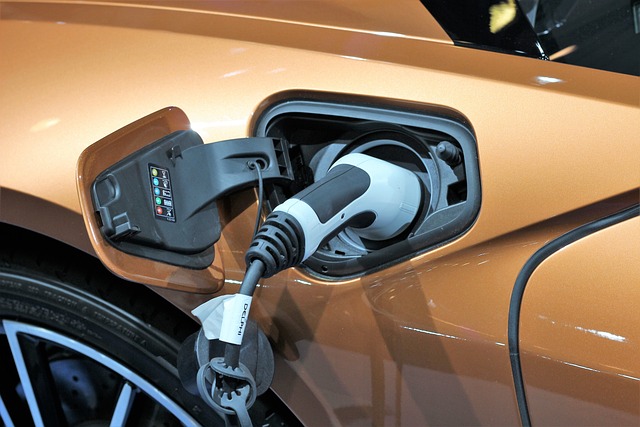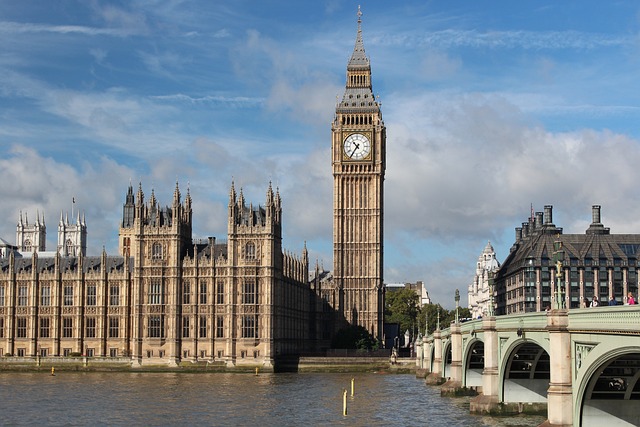Each year, millions of people worldwide pack their bags for vacation. These trips are the perfect time to get away, relax, and experience new cultures. Making vacation plans typically includes using a gas-powered car, but the rise of electric vehicles (EVs) has changed the landscape of sustainable-oriented travel.
Nowadays, vacationers can be greener by driving EVs and using electric public transportation. What does the EV revolution mean for you? Here’s how these cars are changing vacation planning.
How EVs Change the Landscape of Travel

Vacations will remain popular regardless of transportation, but their landscape will change because of EVs. Here are nine ways your travel will change if you vacation with an EV.
1. Reduced Emissions
The most significant advantage you reap from driving EVs is reduced greenhouse gas (GHG) emissions. Fully electric vehicles emit no tailpipe emissions, making them more efficient than gas-powered cars. The only pollution EV owners should be concerned about is the energy from power plants that charge the vehicle. Still, their power consumption is lower than cars with internal combustion (IC) engines.
IC vehicles significantly contribute to carbon dioxide (CO2) emissions, and the problem has only worsened over the years. In 2000, passenger cars emitted 2.2 billion metric tons of CO2 before releasing 3 billion metric tons in 2020. EVs are crucial in making travel more sustainable by reducing output.
2. Lower Carbon Footprint
GHG emissions are only one part of your carbon footprint. EVs have a smaller one because of their nonexistent tailpipe emissions, but other factors contribute to this benefit. Recycling EVs when they reach their end of life is easier than gas-powered cars. They run on lithium-ion batteries containing lithium and cobalt. Recycling facilities can extract these metals and repurpose them.
You may need a plane to reach your destination when traveling long distances. Driving from the U.S. to Sri Lanka in an EV is impossible, so you must take an airplane. However, traveling within a country will have a lower carbon footprint if you choose an EV over a plane.
For example, imagine your trip is from New York to Chicago. The round-trip distance is about 1,500 miles, depending on which airports you use. Planes emit more CO2 than cars, trains and buses per passenger, worsening their environmental impact. EVs may make the trip longer, but driving is worth it to lower your carbon footprint.
3. Better Air Quality
Large cities and tourist destinations welcome tourists from around the world to celebrate their attractions and fuel the local economy. However, heavy CO2 emissions harm these beautiful locations because of pollution. For example, Los Angeles is one of the most polluted cities in the world due to traffic congestion and high CO2 emissions.
EVs significantly help densely populated areas and tourist attractions because they lack tailpipe emissions. As their market share expands, cities worldwide will benefit from reduced pollution and increased air quality.
Electric power is only one part of EVs’ improvement. You can power your chargers through solar and wind power, adding to your car’s environmental consciousness. Renewable energy is a growing market, making EVs ideal for improving air quality.
4. Quieter Driving
Air pollution is a significant issue with vehicles, but it’s also worth considering their noise pollution. EVs benefit travelers because of their quiet operation. Electric cars are quieter than their gas-powered counterparts because they don’t have an IC engine. The absence of pistons, valves and combustion chambers means your EV drives silently down the road.
EVs are quiet enough to make almost no noise at low speeds. Many countries and governing bodies require new models to emit sounds when operating below certain rates. For example, imagine you travel to Europe for a summer vacation. The European Union (EU) mandates that EVs from participating countries create sound when driving below 12 mph.
The quietness is a significant advantage for vacationers, especially those visiting national parks and other outdoor areas. Quiet EVs are less likely to disturb animals in the forests and scare them away from their habitats. Reducing air and noise pollution makes your outdoor adventure much more environmentally friendly.
5. Fewer Maintenance Costs
EV quietness is not by accident. These electric cars have fewer moving parts than their gasoline-powered counterparts, making them much easier to maintain. Removing the engine from an EV also eliminates the responsibility of changing the oil and topping off other essential liquids, such as transmission fluid. EVs also have simple transmissions, meaning there’s a much lower chance of parts failing in the vehicle.
Over time, EV parts don’t suffer from wear and tear like those in gasoline cars. The lower maintenance costs let people save money and use their funds for vacations instead. You’ll also be able to use the same vehicle for multiple trips. Imagine you live on the Atlantic Coast and love exploring the eastern seaboard. Over the years, you can use the same EV to visit Florida, Washington, D.C., and Maine without worrying about your car’s wear and tear.
6. Enhanced Range
One criticism of EVs has been their lack of range. Electric cars are nice to drive for short durations until they run out of power. Then, you’re stuck on the road needing assistance. This notion had more credence 10 or 15 years ago, making EV travel difficult for vacationers.
However, research and development have increased the range of EVs in the last decade. The improvements have primarily come from better aerodynamics and more efficient batteries. For example, automakers have found that lithium-ion batteries work better than lead-acid batteries.
The EV range improvement has been dramatic. In 2011, the median range for an EV was about 73 miles on a single charge. This number nearly quadrupled in 2022, rising to 247 miles. This hasn’t caught up with gasoline cars yet, but advancing technology provides hope EVs will reach that point someday.
7. Improved Charging Infrastructure
Another drawback of EVs has been their charging infrastructure. You must stop when driving long distances to ensure your car can make it the entire trip. A few years ago, most countries didn’t have too many public charging stations, leaving you with few options on road trips.
Luckily, many countries are stepping up their charging networks to support the influx of EVs in the automobile market. For example, in the United States, the Biden administration has pledged to build 500,000 EV chargers and strengthen the existing stations to ensure they work up to standards. Improving the charging infrastructure is vital for promoting EV use and supporting environmental health.
8. Advanced Technology Features
Most EVs you see on the road are relatively new vehicles. The novelty of these machines means they’re more likely to have advanced technological features. These components benefit vacationers by saving time and money and making travel more fun.
Many EVs have a regenerative braking system. This mechanism lets drivers recapture energy lost when braking. Your car stores this power and extends its range, keeping you on the road longer. Spending less time at charging stations adds to better road trips and more time at your destination.
Another handy tech feature of EVs is their software updates. Typically, you’d have to head to a dealership or mechanic to get the latest feature in your car. However, now you can download security patches, bug fixes and battery optimizations when you connect to the internet. The technological capabilities of EVs improve the user experience for travelers worldwide.
9. Greater Market Options
Few fully electric cars were on the market in the late 2000s and early 2010s. Tesla unveiled the Roadster but only had a limited supply. Nissan started selling its Leaf model in 2010. Now, most automakers on the market provide EV options. Increasing the supply promotes competition and makes these machines more affordable for travelers.
Have you ever wanted to ride in style with an EV? Even luxury sports car manufacturers in Italy are gravitating toward them. For example, Ferrari is a mainstay in the sports car community. In 2021, the Maranello-based manufacturer announced it would build its first electric supercar. The EV options are growing yearly, giving travelers more flexibility in vacationing.
What Options Do You Have for Electric Transportation?

Imagining EVs likely makes you think of cars, but there are other forms of electric transportation for your travels. These five different kinds of EVs change the landscape of modern travel.
1. Cars
Electric transit is most easily accessible with cars, especially if you live or travel to more rural areas. You’ll most likely find EVs at dealerships and rental centers in any given city. The supply has been slowly increasing, allowing EVs a larger market share. International Energy Agency (IEA) data shows EVs’ market share increased to 14% in 2022 after growing 4% in 2020.
Why have automakers quickly gravitated toward EVs? Environmentally friendly products are more favorable to consumers because of their eco-friendliness. Auto manufacturers are also adapting to government regulations. For example, the EU wants all new vehicles to be electric by 2035.
2. Motorcycles
Electric transit is for more than just sedans, trucks and SUVs. Electrification is also happening in other parts of the transportation sector, such as motorcycles. Motorcycles are an excellent way to feel the breeze on your skin and take solo trips worldwide. Your average motorcycle uses gas for power, but electric models are finding their place in the travel industry.
Electric motorcycles don’t have great range yet, with most bikes maxing at around 40-60 miles. However, vacationers can use trucks and trailers to haul their electric motorcycles for off-road excursions. As battery technology improves, motorcycles can take long-distance trips more efficiently.
Expanding electric transportation from cars to motorcycles and other vehicles is critical when considering environmental impact. The transportation industry accounted for 27% of GHG emissions in 2020, making it one of the leading sectors. Finding solutions in every corner of the market is essential for improving the planet’s health.
3. Public Transit
Large cities are fun places to vacation because of the endless things to do. Getting from one place to another may be difficult in traffic-heavy cities like Philadelphia, Miami or Chicago. So, what are your other options? Vacations with an itinerary may be schedule-dependent, making you pressed for time.
Fortunately, you can stay environmentally conscious by using electric public transit. More cities worldwide have adopted fully electric transportation systems, including trains, buses and ferries. You can see terrific examples of electrified transit in countries like Norway and China.
In Norway, Oslo has unveiled plans to transform its transportation system into a fully electric one. By the end of 2023, residents and travelers can use electrified buses, ferries, trams and trains across the city.
4. Scooters
EVs don’t always have to be for transportation — they can also be for fun. One innovation is the electric scooter. These individualized machines are convenient for traveling short distances without waiting for public transport or relying on traffic conditions in the city.
Many cities worldwide have implemented programs to encourage scooter use. For example, Reykjavik, Iceland, launched its electric scooter initiative in 2019. When you visit the city, you can rent a scooter and not have to bring it back to where you found it when you’re done. This policy helps travelers because they might not be familiar with city streets.
5. Bicycles
Another fun but practical way for vacationers to navigate city streets is to use electric bicycles or e-bikes. These motorized bikes make sightseeing much more accessible, whether on the streets of Berlin or exploring the wonders of Bavarian Forest National Park. You can take it easy or test the bicycle’s speed on the roads, with most machines going up to 20 mph.
E-bikes are most convenient for tackling cities with steep hills. The bicycles assist you with inclines by making pedaling easier — a significant boost for travelers carrying backpacks. For instance, you may be in San Francisco for a weekend excursion. The city is famous for its inclines and declines due to its geography. Riding bikes can be challenging here, so having an electric version significantly improves your experience.
How Should You Plan for EV Road Trips?

Using EVs for vacation is an excellent idea if you want to remain environmentally conscious. Before taking your trip, you should know these five tips to ensure a smooth ride.
1. Pack Lightly
You may depart your home in an EV or rent one at your destination. Regardless, you should pack lightly and monitor the weight of your vehicle. Heavy loads force your car to work harder than usual to power itself. Thus, you’ll burn more battery power to reach your destination and must stop at charging stations sooner and longer.
Packing can be complex because you don’t want to risk leaving anything behind if you need it later. Be choosy when putting things in your suitcase and only bring the essentials. Small things might not seem like much, but the pounds add up and weigh down your vehicle. Consider using soft-sided luggage or trying minimalist practices to keep your car light.
2. Plan Charging Stops
Planning where you will stop during a road trip is wise. Many families research hotels and restaurants on the way. With an EV, you must add where you plan to charge your car. Find a hotel or overnight accommodation near a public charging station when possible. After a long day on the road, the last thing you want to do is walk far to your room.
Use online resources to find EV charging stations along the way. Some websites will also tell you the service status of the chargers, allowing you to take detours if necessary. Be flexible because some centers are in densely populated areas. These places may have long wait times, so stop at a station outside the city.
3. Charge Before Leaving
Many hotels have started installing charging stations to entice guests to book reservations. These are highly convenient for travelers because you can charge your car overnight and have it ready for use in the morning. Some vacationers need to hit the road early, and nighttime charging allows them to get up and go.
Charging your EV overnight also has environmental and financial benefits. Utility rates are typically cheaper at night because demand is lower. Off-peak charging saves money for EV owners and strains the electrical grid less. It also helps your battery because the weather is typically cooler and easier on the vehicle.
4. Drive Smoothly
Your driving habits are another significant component affecting your EV’s range. Smooth driving will help you get the most out of your vehicle. When you travel to Salt Lake City, driving at top speed on the Bonneville Salt Flats may be tempting, but you should take it easy and be a mindful driver.
There are a few ways to drive safely and extend your range, including:
- Cruise control: Acceleration and deceleration use battery power, and it’s not always necessary. Use cruise control on highways to limit your speeding up and slowing down.
- Warming up: Are you going on a winter vacation? Temperatures can dip below freezing in Buffalo, Boston and Montreal. EVs burn more energy in cold weather, so warm up your car beforehand by preconditioning. Warm EVs will be more efficient and have better ranges.
- Tire pressure: One factor you shouldn’t forget about is tire pressure. Read your manufacturer’s recommendations on the pounds per square inch (psi) and keep each tire adequately inflated. Underinflated tires compromise your EV’s range because the car faces more rolling resistance, thus requiring more energy.
5. Update Software
EVs are far different from gas-powered vehicles because they use software like your computer and phone. They use electronics to control your infotainment screens, the chassis, the powertrain and other vital components. Like computers, your EV’s software requires updates. Ensure you do so before taking a trip because it significantly affects your efficiency and safety.
Software updates are crucial because they could include essential fixes for your car. These patches improve battery efficiency or strengthen connectivity between your phone and vehicle. Upgrades may be most important for cybersecurity purposes. Using software leaves your car vulnerable to cyberthreats, so regularly updating your EV protects it from thieves.
EV-Friendly Tourism Destinations in the U.S.

EV travel is becoming easier by the year. Cities across the U.S. have bought into EVs, making transportation easier for residents and travelers. Here are five of the best examples in the country.
- Seattle: The Emerald City is one of North America’s leaders in advancing renewable energy. Seattle plans to have its buses run only on renewable energy by 2030 through its Green Fleet Action Plan.
- Chicago: Chicago is another U.S. city with solid ambitions to shift to EVs. The Second City’s municipal government has already converted much of its fleet to EVs and plans to electrify the rest by 2035. Additionally, officials say they want to ensure residents get equitable benefits for driving EVs.
- Los Angeles: Pollution and state regulations have motivated Los Angeles to quickly integrate EVs into the city. Driving an EV is easy in the metropolitan area because the City of Angels leads the nation in charging stations. It has over 1,600 stations, while San Diego, the next-closest city, has about 740.
- The Bay Area: San Francisco, Oakland, San Jose and more comprise the Bay Area in northern California. It’s no surprise the popular tech hub is pushing for more electric transit and EV infrastructure. For example, almost all of San Francisco’s buses use hydroelectric power. Many Bay Area Rapid Transit (BART) stations are adding public charging stations for residents and travelers.
- Austin: Austin, Texas, is a booming city in the American Southwest. This rising metropolitan area is growing in EV infrastructure by purchasing 200 electric buses and adding solar-powered charging stations. Austin has over 2,000 charging stations across the city, with many units charging multiple vehicles simultaneously.
EV-Friendly Tourism Destinations Worldwide

U.S. cities aren’t the only ones embracing EV culture. Here are five international cities showing their ambition for renewable energy.
- London: You can call London the EV capital of Europe for its expansive infrastructure. The city boasts 13,000 public charging stations — the most in Europe. London plans to have between 40,000 and 60,000 chargers by 2030.
- Stockholm: Stockholm epitomizes sustainability through its terrific design and eco-friendly practices. Sweden’s capital has been a world leader in renewable energy, with its buses and trains using 100% renewable energy since 2017.
- Tokyo: Travel 5,000 miles east of Stockholm to Tokyo, another city dedicated to electric transit. It recently implemented hybrid buses using electric and hydrogen fuel — taking inspiration from the Toyota Mirai. The city is also heading toward electric trams and trains to carry residents around town quickly.
- Toronto: Toronto wants residents and travelers to feel like they’re in a walkable city. By 2030, it wants 75% of school and work trips under 5 kilometers to use transit, cycling or walking. It also aims to electrify 30% of all registered vehicles in the city.
- Singapore: Singapore is one of the world’s most sustainability-focused cities, emphasizing renewable energy, public transportation and reducing waste. The city-state has ambitious EV goals, including a fully electric bus fleet by 2025, 60,000 EV chargers by 2030 and 100% clean-energy vehicles by 2040.
Emphasizing Electric Travel Wherever You Go
Climate change is a pressing global issue, motivating many countries worldwide to rethink transit. Large cities have millions of residents and tourists arriving yearly, so vehicle GHG emissions increase quickly. Many areas have turned to EVs to mitigate the problem.
EVs are here to stay and rapidly changing the sustainable-oriented travel landscape. The most popular cities you like to visit are improving their EV infrastructure for passenger vehicles and public transportation. Before you travel, get to know the most EV-friendly locations and learn how to prepare for a more sustainable trip.
Author Bio
Jack Shaw has spent the last five years writing freelance and seeing as much of the world as he can. He has a distinct love of traveling and exploring new cultures. Writings about his experiences can be found on Modded, The Travel Facts, Duluth Pack and more.
